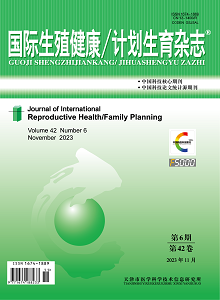Objective: To investigate the cognition, views and attitudes of perimenopausal and postmenopausal women to menopause-related sexual dysfunction, and to provide guidance for sexual health care for middle-aged women. Methods: A total of 1 002 women who went to Maternity and Child Healthcare Hospital and Community Health Service Center of Xuhui, Minhang and Fengxian District for medical treatment or physical examination were screened from March 2021 to June 2022. 870 women who met the inclusion criteria were investigated by questionnaire in a cross-sectional way, and their population socio-economic status, cognition, views and attitudes towards menopause-related sexual dysfunction were collected. Results: A total of 831 completed questionnaires were collected, with an effective rate of 95.5%(831/870). 291(35.0%) of the respondents knew female sexual dysfunction, and 255(30.7%) of the respondents knew that menopause-related sexual dysfunction was mainly caused by the decline of menopause-related sex hormone levels. There was a statistically significant difference in the awareness rate among respondents of different ages, educational levels, occupations, family income, household registration types, and household registration locations(all P<0.05). Logistic regression analysis showed that education level of junior college degrees or above (OR=5.237, 95%CI: 3.071-8.928, P<0.001) and professional technical personnel (OR=3.291, 95%CI: 1.184-9.125, P=0.022) have a higher awareness rate of menopause-related sexual dysfunction. Only 141(17.0%) respondents reported having talked to doctors about their experience of menopause-related sexual dysfunction symptoms, 747(89.9%) stated that they do not have sufficient sources of information. 83.8%(696) of the surveyed respondents reported never receiving treatment. Conclusions: Perimenopausal and postmenopausal women have a low awareness and treatment rate of menopause-related sexual dysfunction. Therefore, the personnel engaged in women′s health care should strengthen sexual health science popularization and health education for middle-aged women to improve their medical and treatment rates, thereby improving their quality of life.

